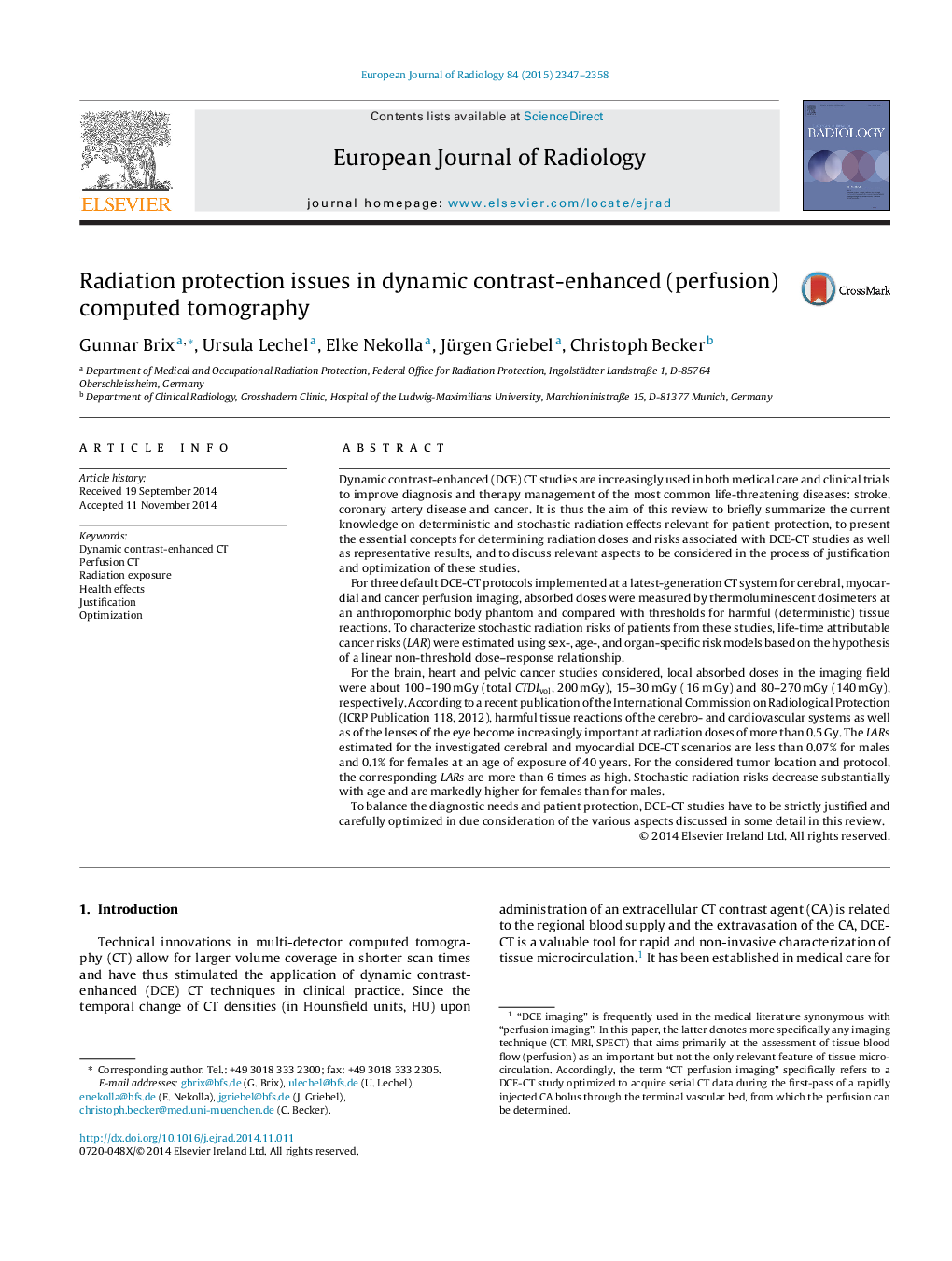| کد مقاله | کد نشریه | سال انتشار | مقاله انگلیسی | نسخه تمام متن |
|---|---|---|---|---|
| 4224849 | 1609747 | 2015 | 12 صفحه PDF | دانلود رایگان |
• We summarize the most recent recommendations of the ICRP on radiation effects.
• We present dose distributions for three representative DCE-CT protocols.
• We estimate stochastic radiation risks of patients using most recent risk models.
• We discuss aspects to be considered in the process of justification and optimization.
Dynamic contrast-enhanced (DCE) CT studies are increasingly used in both medical care and clinical trials to improve diagnosis and therapy management of the most common life-threatening diseases: stroke, coronary artery disease and cancer. It is thus the aim of this review to briefly summarize the current knowledge on deterministic and stochastic radiation effects relevant for patient protection, to present the essential concepts for determining radiation doses and risks associated with DCE-CT studies as well as representative results, and to discuss relevant aspects to be considered in the process of justification and optimization of these studies.For three default DCE-CT protocols implemented at a latest-generation CT system for cerebral, myocardial and cancer perfusion imaging, absorbed doses were measured by thermoluminescent dosimeters at an anthropomorphic body phantom and compared with thresholds for harmful (deterministic) tissue reactions. To characterize stochastic radiation risks of patients from these studies, life-time attributable cancer risks (LAR) were estimated using sex-, age-, and organ-specific risk models based on the hypothesis of a linear non-threshold dose–response relationship.For the brain, heart and pelvic cancer studies considered, local absorbed doses in the imaging field were about 100–190 mGy (total CTDIvol, 200 mGy), 15–30 mGy ( 16 m Gy) and 80–270 mGy (140 mGy), respectively. According to a recent publication of the International Commission on Radiological Protection (ICRP Publication 118, 2012), harmful tissue reactions of the cerebro- and cardiovascular systems as well as of the lenses of the eye become increasingly important at radiation doses of more than 0.5 Gy. The LARs estimated for the investigated cerebral and myocardial DCE-CT scenarios are less than 0.07% for males and 0.1% for females at an age of exposure of 40 years. For the considered tumor location and protocol, the corresponding LARs are more than 6 times as high. Stochastic radiation risks decrease substantially with age and are markedly higher for females than for males.To balance the diagnostic needs and patient protection, DCE-CT studies have to be strictly justified and carefully optimized in due consideration of the various aspects discussed in some detail in this review.
Journal: European Journal of Radiology - Volume 84, Issue 12, December 2015, Pages 2347–2358
